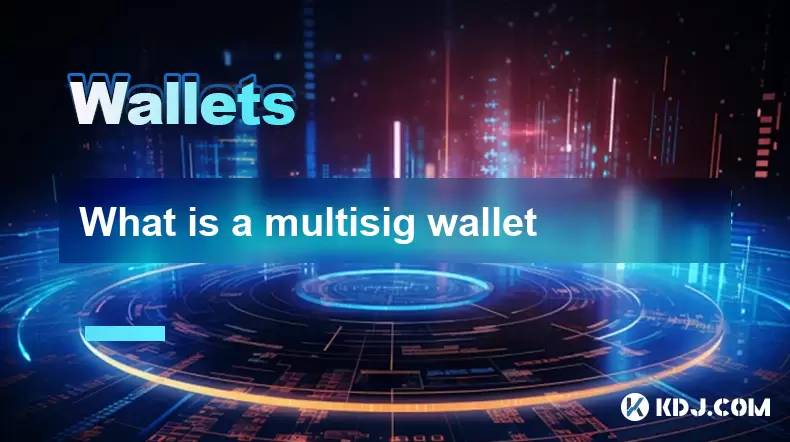-
 Bitcoin
Bitcoin $118,841.1054
1.02% -
 Ethereum
Ethereum $3,364.2689
7.44% -
 XRP
XRP $3.0337
3.93% -
 Tether USDt
Tether USDt $1.0004
0.04% -
 BNB
BNB $708.2059
2.49% -
 Solana
Solana $173.2385
5.74% -
 USDC
USDC $0.9999
-0.01% -
 Dogecoin
Dogecoin $0.2121
6.85% -
 TRON
TRON $0.3090
2.81% -
 Cardano
Cardano $0.7628
2.25% -
 Hyperliquid
Hyperliquid $46.8391
-2.08% -
 Stellar
Stellar $0.4537
0.15% -
 Sui
Sui $3.9529
-2.88% -
 Chainlink
Chainlink $16.6414
3.72% -
 Hedera
Hedera $0.2354
1.52% -
 Bitcoin Cash
Bitcoin Cash $499.1285
0.43% -
 Avalanche
Avalanche $22.6400
0.57% -
 Shiba Inu
Shiba Inu $0.0...01438
4.88% -
 UNUS SED LEO
UNUS SED LEO $8.8507
-0.64% -
 Toncoin
Toncoin $3.1498
2.35% -
 Litecoin
Litecoin $97.4954
1.21% -
 Polkadot
Polkadot $4.1541
1.50% -
 Monero
Monero $331.4406
-1.03% -
 Pepe
Pepe $0.0...01350
5.24% -
 Uniswap
Uniswap $8.9103
-5.01% -
 Bitget Token
Bitget Token $4.7540
4.51% -
 Dai
Dai $0.9999
-0.02% -
 Ethena USDe
Ethena USDe $1.0008
0.00% -
 Aave
Aave $322.3328
-1.63% -
 Bittensor
Bittensor $431.8026
-0.50%
What happens if I forget my Trezor passphrase
If you forget your Trezor passphrase, access to funds becomes permanently inaccessible unless you can recall or recover the exact phrase.
Jul 09, 2025 at 03:15 am

Understanding the Role of a Trezor Passphrase
If you use a Trezor hardware wallet, you may have set up a passphrase as an extra layer of security beyond your recovery seed. Unlike the 12 or 24-word recovery phrase that comes with your device, a Trezor passphrase acts like a hidden wallet modifier. When entered, it creates an entirely new wallet derivation path, meaning that without the correct passphrase, you cannot access the associated funds.
This additional word or string is not stored anywhere on the device itself—it's meant to be memorized or securely backed up by the user. Because of this design, if you forget your Trezor passphrase, there is no automated way to recover it. The system does not store it, and Trezor support cannot retrieve it for you. This makes the passphrase both powerful and potentially risky if mismanaged.
Recovery Options After Forgetting Your Passphrase
Once you realize you've forgotten your Trezor passphrase, the first thing to understand is that the only way to regain access is through brute force memory recall or previously created backups. There are no backdoors in the system for recovering lost passphrases.
Some users attempt to guess their passphrases by trying common variations, especially if they remember part of it. However, since each variation creates a completely different wallet, there’s no indication of progress during guessing attempts. You either enter the exact passphrase or you don’t gain access to the specific wallet it protected.
It's important to note that even if you can't remember the full passphrase, entering something close will not bring you closer to recovery. Each incorrect entry simply opens a different (and likely empty) wallet address.
How to Prevent Future Passphrase Loss
To avoid future issues related to forgetting your Trezor passphrase, consider implementing a secure but accessible backup strategy. One method is writing down the passphrase and storing it in a physically secure location, such as a safe or safety deposit box. Alternatively, some users utilize encrypted digital storage solutions to keep a copy of the passphrase, ensuring it's accessible only to them.
Another preventive approach involves using mnemonic techniques to help memorize the passphrase more effectively. Associating the words with vivid imagery or familiar patterns can aid in long-term recall. Additionally, practicing passphrase entry regularly can reinforce memory retention and reduce the chances of forgetting it over time.
Remember, never store your passphrase alongside your recovery seed unless it's in a highly secure format. Doing so could expose both layers of protection simultaneously in case of theft or loss.
What Happens to the Funds Behind a Forgotten Passphrase
If you're unable to recover your Trezor passphrase, the funds associated with that particular wallet derivation remain inaccessible indefinitely. These funds are not deleted or transferred—they simply exist on the blockchain behind a wallet address that cannot be accessed without the exact passphrase.
In essence, this means that while the cryptocurrency still exists on the chain, it becomes unreachable from your perspective. There is no mechanism within the Trezor ecosystem or most blockchain protocols to forcibly unlock these funds without the correct credentials.
This scenario underscores the importance of treating the Trezor passphrase with the same level of care and attention as the recovery seed itself. It's not just an optional feature—it's a critical component of advanced wallet security that must be handled responsibly.
Steps to Take If You Suspect Partial Recall of the Passphrase
If you believe you might remember parts of your Trezor passphrase, there are steps you can take to systematically test possible combinations:
- List all potential words or phrases that might be part of the original passphrase.
- Try entering various combinations manually into your Trezor device.
- Use third-party tools designed for passphrase permutation testing, though always ensure these tools are open-source and trustworthy before inputting any sensitive data.
- Consider using scripts or software that can generate possible combinations based on known parts of the passphrase.
- Avoid sharing any portion of your passphrase online or with untrusted parties under any circumstances.
These methods can be time-consuming and are not guaranteed to yield results. However, for those who suspect they are close to recalling the correct phrase, systematic testing remains the only viable option.
Frequently Asked Questions
Can I reset my Trezor passphrase?
No, there is no option to reset or change your Trezor passphrase independently of your wallet structure. Changing the passphrase effectively creates a new wallet, which means you must reassign funds to the new derivation path manually.
Is there a way to export my passphrase from the Trezor device?
No, the Trezor passphrase is never stored on the device or in the firmware. It exists solely in the user’s memory or backups and cannot be exported or retrieved from the hardware.
Can I use the same passphrase on multiple wallets?
Yes, technically you can apply the same Trezor passphrase across multiple devices or wallets, but doing so reduces the security benefits of having a unique passphrase per wallet. It also increases risk exposure if one passphrase is ever compromised.
Does the Trezor Model T handle passphrases differently than the Trezor One?
No, both models treat passphrases in the same cryptographic manner. The difference between the two lies in hardware capabilities and interface features, not in how passphrases are used or processed.
Disclaimer:info@kdj.com
The information provided is not trading advice. kdj.com does not assume any responsibility for any investments made based on the information provided in this article. Cryptocurrencies are highly volatile and it is highly recommended that you invest with caution after thorough research!
If you believe that the content used on this website infringes your copyright, please contact us immediately (info@kdj.com) and we will delete it promptly.
- Coinbase's 'Base App': Your All-in-One Crypto Hub?
- 2025-07-17 12:30:13
- Raydium, RAY Repurchase, and Circulation: A Solana Ecosystem Powerhouse
- 2025-07-17 12:30:13
- Bitcoin, Ethereum, Market Cap: Decoding the Crypto Buzz
- 2025-07-17 12:50:12
- Bitcoin Whale Wallets: Navigating the Tides of Crypto Fortunes
- 2025-07-17 13:00:12
- California Dreamin' Web3: Coinbase, Ripple, and the Golden State's Crypto Embrace
- 2025-07-17 10:30:12
- Navigating the Base Ecosystem: Investment Targets and Strategic Restructuring
- 2025-07-17 10:50:12
Related knowledge

What is a hardware wallet's secure element
Jul 11,2025 at 10:14pm
What is a Hardware Wallet's Secure Element?A hardware wallet is one of the most secure ways to store cryptocurrencies. Unlike software wallets, which ...

How to track crypto whale wallets
Jul 16,2025 at 10:00am
What Are Crypto Whale Wallets?Crypto whale wallets refer to large cryptocurrency holdings controlled by individuals or entities that have the potentia...

What is the difference between a custodial and non-custodial wallet
Jul 13,2025 at 03:21am
Understanding Wallet Types in CryptocurrencyIn the world of cryptocurrency, digital wallets play a crucial role in managing and securing assets. A wal...

What is a multisig wallet
Jul 16,2025 at 01:42am
Understanding the Concept of a Multisig WalletA multisignature (multisig) wallet is a type of cryptocurrency wallet that requires more than one privat...

How to add a new network to MetaMask
Jul 11,2025 at 11:42pm
Understanding the Need to Add a New NetworkWhen using MetaMask, a popular Ethereum-based cryptocurrency wallet, users often need to interact with diff...

How to add Ethereum L2 networks like Arbitrum to Trezor
Jul 11,2025 at 12:36am
What Is Ethereum L2 and Why Add It to Trezor?Ethereum Layer 2 (L2) networks, such as Arbitrum, are scaling solutions designed to reduce congestion on ...

What is a hardware wallet's secure element
Jul 11,2025 at 10:14pm
What is a Hardware Wallet's Secure Element?A hardware wallet is one of the most secure ways to store cryptocurrencies. Unlike software wallets, which ...

How to track crypto whale wallets
Jul 16,2025 at 10:00am
What Are Crypto Whale Wallets?Crypto whale wallets refer to large cryptocurrency holdings controlled by individuals or entities that have the potentia...

What is the difference between a custodial and non-custodial wallet
Jul 13,2025 at 03:21am
Understanding Wallet Types in CryptocurrencyIn the world of cryptocurrency, digital wallets play a crucial role in managing and securing assets. A wal...

What is a multisig wallet
Jul 16,2025 at 01:42am
Understanding the Concept of a Multisig WalletA multisignature (multisig) wallet is a type of cryptocurrency wallet that requires more than one privat...

How to add a new network to MetaMask
Jul 11,2025 at 11:42pm
Understanding the Need to Add a New NetworkWhen using MetaMask, a popular Ethereum-based cryptocurrency wallet, users often need to interact with diff...

How to add Ethereum L2 networks like Arbitrum to Trezor
Jul 11,2025 at 12:36am
What Is Ethereum L2 and Why Add It to Trezor?Ethereum Layer 2 (L2) networks, such as Arbitrum, are scaling solutions designed to reduce congestion on ...
See all articles

























































































